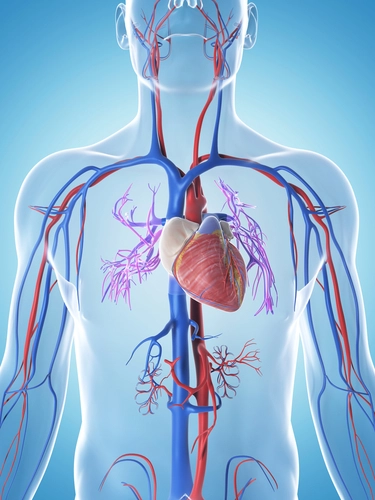Answer These Top 3 Questions to Test Your Understanding of Chemotherapy Administration

When reporting multiple infusions, choose initial administration service code to represent the primary reason for the infusion.
When reporting administration of chemotherapy, always remember your claims are incomplete if you miss any details of administration, medication, and underlying condition. Here is a detailed chemotherapy example you may find supported in the physician’s progress note, nursing documentation and infusion log. Test your understanding of reporting chemotherapy by answering key questions for this example.
Visit Scenario: A patient diagnosed with a malignant neoplasm of the large intestine receives the following chemotherapy regimen. Table 1 lists the medications the patient received and the dose and route of administration of the medications.
Earn for Continuous Pump and Piggy Back Infusions
Question 1: What procedure codes will you report for the administration of medications listed in table 1?
a) 96413, 96415, 96416, 96367
Answer 1: The correct answer is option d) 96413, 96415, 96416, 96367 x2.
The CPT® guidelines for infusions direct that initial administration service code represents the primary reason for the infusion when multiple infusions, injections, or combinations are used irrespective of the order in which infusions are administered. The exception to this direction is when the protocol required the use of two separate IV lines. In this case, chemotherapy was the primary reason for the visit services.
Oxaliplatin, a chemotherapeutic medication, was given over one hour and fifty (50) minutes. You would submit code 96413 (Chemotherapy administration, intravenous infusion technique; up to 1 hour, single or initial substance/drug) for the first hour and +96415 (Chemotherapy administration, intravenous infusion technique; each additional hour [List separately in addition to code for primary procedure]) for the additional 50 minutes.
Secondly, anaphylactic medications dexamethasone and palonosetron (Aloxi), were also administered piggy back for 20 minutes each subsequent to each other. You choose unit of code +96367 (Intravenous infusion, for therapy, prophylaxis, or diagnosis [specify substance or drug]; additional sequential infusion of a new drug/substance, up to 1 hour [List separately in addition to code for primary procedure]) for each additional infusion. In this case, there were two (2) so, two (2) units of 96367 are reported since they were given one after the other as the time shows. However, if the medication were mixed together in the same bag/given over the same time, only one unit of 96367 would be reported.
You do not report the administration of saline. The fluid was used to keep the line open (for line patency) and therefore considered incidental hydration.
Lastly, an IV infusion of fluorouracil was started using a portable pump. For this service, submit code 96416 (Chemotherapy administration, intravenous infusion technique; initiation of prolonged chemotherapy infusion [more than 8 hours], requiring use of a portable or implantable pump) for the pump initiation.
Bill Correct Units for Drug Administered
Medication HCPCS Codes and definitions for oxaliplatin (Eloxatin®), fluorouacil (5FU), dexamethasone (Decadron®) and palonosetron (Aloxi®):
Question 2: What are the HCPCS Level II codes for the administered medications listed in table 1?
a) J9190 x 10, J9263 x 292, J1100 x10, J2469 x10, J0641 x 690, J7042
Answer 2: The correct answer is option d) J9190 x 9, J9263 x 292, J9263-JW x 8, J1100 x10, J2469 x10.
Fluorouracil, an antineoplastic drug, is a fluorinated analogue of uracil. You submit HCPCS code J9190 for every 500 mg of fluorouracil. In the example, a total of 4128 mg of fluorouracil is administered. Since the HCPCS code unit is in 500mg increments, you round to the next highest unit to represent the amount given as 9 units of J9190. (See Medicare Claims Processing Manual, Chapter 17 Drugs and Biologicals, Section 10 Payment Rules)
Oxaliplatin is a chemical complex containing the metal, platinum. Oxaliplatin is used as an antineoplastic drug. You submit code J9263 for each 0.5 mg of oxaliplatin given. The oxaliplatin dose administered is reported as 146 mg (292 units of J9263).
It is important to understand that oxaliplatin is supplied in 50mg or 100mg single dose vials (“SDV”). Let’s assume one (1) vial of 100mg and one (1) vial of 50mg were used to prepare the infusion. The amount from both vials represents 150mg. Since the entire amount wasn’t captured with the HCPCS code reported for the dose given, the remaining amount of wastage from the last vial can be reported as waste. The wastage amount of 4mg from the second vial would be reported on an additional line on the claims with the modifier JW (Drug amount discarded/not administered to any patient) appearing as 8 units of J9263 (1 unit for each 0.5mg of oxaliplatin wasted).
Decadron (Dexamethasone) is a synthetic corticosteroid that is similar to the endogenous hormone produced in the adrenal gland. For every 1 mg of dexamethasone, you submit one unit of code J1100. In the example, the patient receives 10 mg of dexamethasone, so you submit 10 units of code J1100.
Aloxi (Palonosetron) is a chemical compound that is a selective blocker of serotonin 5-HT3 receptors. It is used for the prevention and treatment of nausea and vomiting associated with chemotherapy. For every 25 mcg of palonosetron, you submit one unit of code J2469. In the example, the patient receives 0.25 mg of palonosetron, for which you submit 10 units of J2469.
Be Specific for Diagnosis Codes
Question 3: Which of the following ICD-10-CM codes do you submit for this patient who has been diagnosed with malignant neoplasm of the large intestine and reports for chemotherapy administration
a) C18.9
Answer 3: The correct answer is option c) Z51.11, C18.9.
Since the patient reports for administration of chemotherapy, you submit ICD-10-CM code Z51.11 (Encounter for antineoplastic chemotherapy) as the primary diagnosis code.
Since site of the neoplasm in the colon is not specified, you submit ICD-10-CM code C18.9 (Malignant neoplasm of colon, unspecified). You do not submit ICD-10-CM code C19 (Malignant neoplasm of rectosigmoid junction) as this code is in specific for the neoplasm in the rectosigmoid junction. 
b) 96413, 96415, 96411 x 2, 96367 x 2
c) 96413, 96415, 96411 x 2, 96367 x 2, 96368
d) 96413, 96415, 96416, 96367 x 2
b) J9190 x 10, J9263 x 292, J1100 x10, J2469 x10, J0641 x 345, J7042
c) J9190 x 10, J9263 x 292, J1100 x10, J2469 x10, J0641 x 345
d) J9190 x 9, J9263 x 292, J9263-JW x 8, J1100 x10, J2469 x10
b) Z51.11
c) Z51.11, C18.9
d) C19




